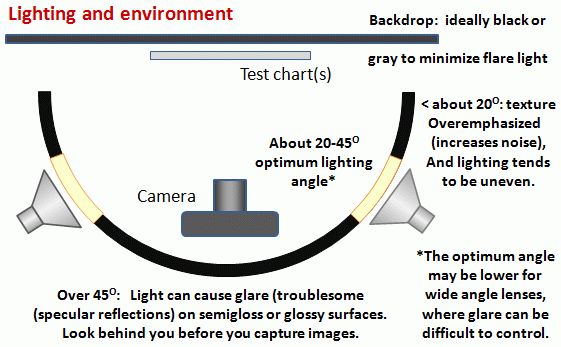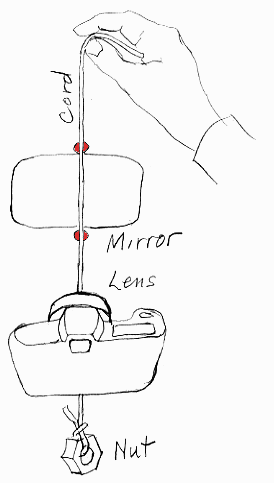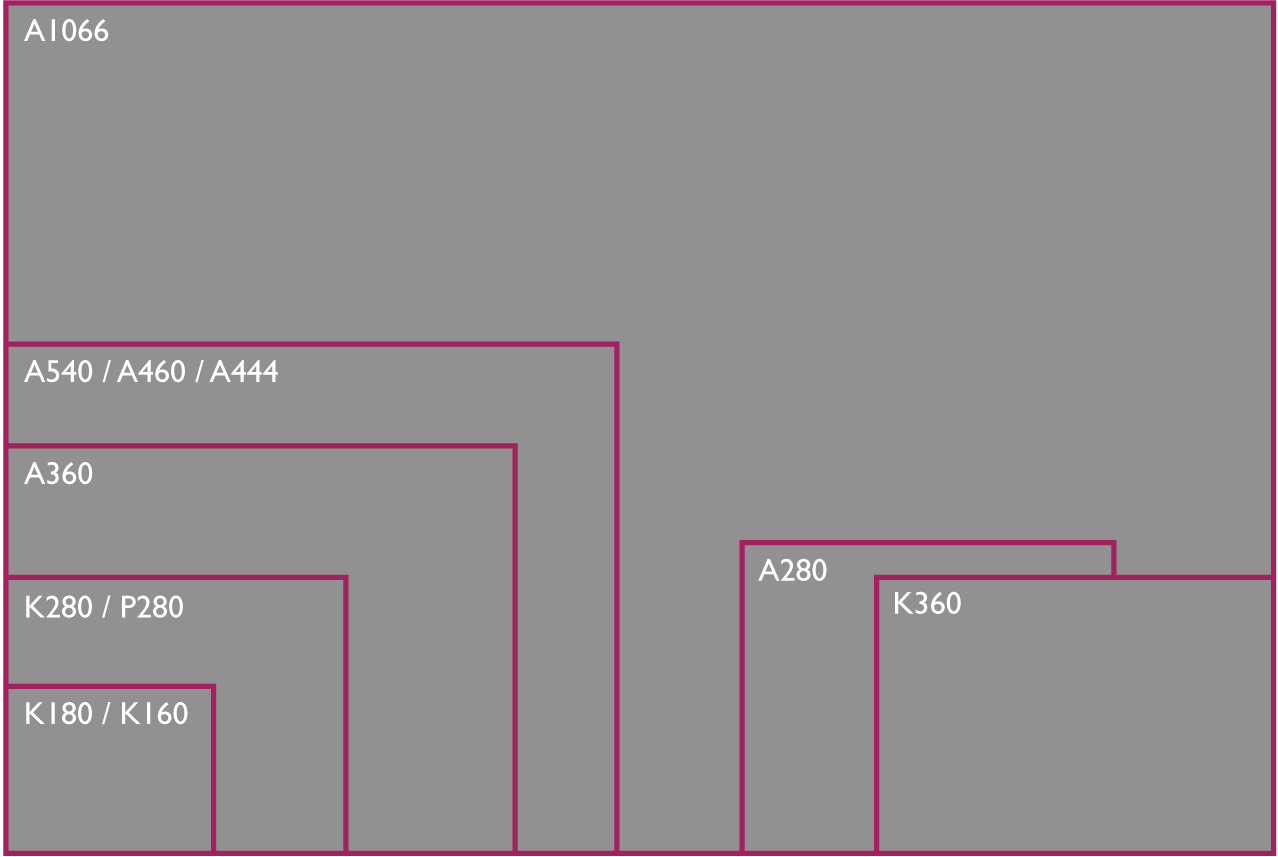4K(UHD TV) resolution test chart YE0277

Product Introduction
The YE0277 is designed to measure and describe the frequency response of an electronic 4K(UHD TV) camera.
DATA
The test chart consists of 50 multiburst fields, which are distributed over 16:9 picture area. The fields are arranged in horizontal and vertical direction to measure resolution in both directions. All fields are labeled with the resolution in cycles per picture height. A cycle consists of one black and one white line.
The two rows in the middle are arranged differently. The upper row takes into account, that the highest resolution is in the middle of the picture. Therefore the 2000 cph field is in the middle and frequencies decrease to both sides.
In the lover row the frequencies increase from the 100 cph on the left to the 2000 cph on the right. The row can be used to measure and describe the frequency response of the camera under test.
How the lights should be positioned
The image below summarizes how the lights should be positioned. The goal is even, glare-free illumination. The lamps represent the stacks of three SoLux track lamps, described above. This may involve a tradeoff, especially with wide-angle lenses. Lighting angles between 35 and 45 degrees work well for normal and long lenses. Avoid lighting behind the camera, which can cause glare. Ambient light should be kept subdued. Check carefully for glare and lighting uniformity before you expose, especially with wide angle lenses, where glare can be difficult to avoid: you may have to move the lights further than normal from the target— or allow glare in portions of the target, taking care that it doesn’t affect critical areas.
Use the meter to check for the evenness of lighting. ±20% over the entire target is sufficient for SFR and Distortion measurements, where small portions of the target are analyzed and exposure is not critical. ±5% or better should be the goal for tonal and color measurements (Stepchart, Colorcheck, and Multicharts). This should be easy to achieve because illumination only needs to be even on the relatively small charts themselves, not on the entire target. The widest (the Kodak Q-14) is 14 inches (35 cm) wide; most are under 11 inches (28 cm). Lighting uniformity is strongly affected by the distance and orientation of the lamps. Our lamps are roughly 50 inches (125 cm) from the center of the target.

Chart setup
Charts are mounted on 40x60 inch (100x150 cm) or 30x40 inch (75x100 cm) 1/2 inch (1.25 cm) thick foam board, which is lightweight, rigid (unlikely to warp), and easy to find at art supply shops. In some cases, the charts are mounted on neutral, middle gray (-18% reflectance) mat board, which is attached to foam board, to ensure correct exposure in camera phones and webcams with autoexposure.
Rope trick (for horizontal positioning)
This trick uses rope and mirrors, as well as the red dots • that mark the horizontal center of the target (or whatever marker you choose).
The cord should be about 1 meter long and have a small weight on one end. A heavy nut— the type that mates with a bolt, not the type that grows on trees— serves well.
Hold the cord in front of the camera (between the camera and mirror), and align your eye and the cord so the so the cord passes in front of the horizontal center markers (red dots • in the images), and so the reflection of the cord passes directly behind the cord. The camera is positioned properly if the center of the lens is aligned with the cord. If it isn’t, shift the camera horizontally until it is.
To complete the horizontal adjustment, rotate (pan) the tripod pan/tilt head so the chart is centered in the image frame.
At this point you should be close enough to correct alignments so the final, fine adjustments should proceed quickly.

Chart
Glare in the outer patches can ruin measurements. With semigloss charts is hard to avoid, even with careful lighting placement. You can reduce it by decreasing the angle between the lights and the chart, but this may make the illumination less even. For this reason matte charts are often recommended when wide angle lenses are being tested (this includes most camera phones).
Chart sizes
During production specific regions of test charts are measured to qualify the production process or to additionally create individual reference data acompagnying a test chart. Measured regions can be color or gray tones.
The measurement devices are calibrated regularly and proven before use.
The test charts are available in the sizes listed below. Other size can also be customized, please do not hestitate to ask for additional information.

Transmissive

How the lights should be positioned
The image below summarizes how the lights should be positioned. The goal is even, glare-free illumination. The lamps represent the stacks of three SoLux track lamps, described above. This may involve a tradeoff, especially with wide-angle lenses. Lighting angles between 35 and 45 degrees work well for normal and long lenses. Avoid lighting behind the camera, which can cause glare. Ambient light should be kept subdued. Check carefully for glare and lighting uniformity before you expose, especially with wide angle lenses, where glare can be difficult to avoid: you may have to move the lights further than normal from the target— or allow glare in portions of the target, taking care that it doesn’t affect critical areas.
Use the meter to check for the evenness of lighting. ±20% over the entire target is sufficient for SFR and Distortion measurements, where small portions of the target are analyzed and exposure is not critical. ±5% or better should be the goal for tonal and color measurements (Stepchart, Colorcheck, and Multicharts). This should be easy to achieve because illumination only needs to be even on the relatively small charts themselves, not on the entire target. The widest (the Kodak Q-14) is 14 inches (35 cm) wide; most are under 11 inches (28 cm). Lighting uniformity is strongly affected by the distance and orientation of the lamps. Our lamps are roughly 50 inches (125 cm) from the center of the target.

Chart setup
Charts are mounted on 40x60 inch (100x150 cm) or 30x40 inch (75x100 cm) 1/2 inch (1.25 cm) thick foam board, which is lightweight, rigid (unlikely to warp), and easy to find at art supply shops. In some cases, the charts are mounted on neutral, middle gray (-18% reflectance) mat board, which is attached to foam board, to ensure correct exposure in camera phones and webcams with autoexposure.
Rope trick (for horizontal positioning)
This trick uses rope and mirrors, as well as the red dots • that mark the horizontal center of the target (or whatever marker you choose).
The cord should be about 1 meter long and have a small weight on one end. A heavy nut— the type that mates with a bolt, not the type that grows on trees— serves well.
Hold the cord in front of the camera (between the camera and mirror), and align your eye and the cord so the so the cord passes in front of the horizontal center markers (red dots • in the images), and so the reflection of the cord passes directly behind the cord. The camera is positioned properly if the center of the lens is aligned with the cord. If it isn’t, shift the camera horizontally until it is.
To complete the horizontal adjustment, rotate (pan) the tripod pan/tilt head so the chart is centered in the image frame.
At this point you should be close enough to correct alignments so the final, fine adjustments should proceed quickly.

Chart
Glare in the outer patches can ruin measurements. With semigloss charts is hard to avoid, even with careful lighting placement. You can reduce it by decreasing the angle between the lights and the chart, but this may make the illumination less even. For this reason matte charts are often recommended when wide angle lenses are being tested (this includes most camera phones).
Chart sizes
During production specific regions of test charts are measured to qualify the production process or to additionally create individual reference data acompagnying a test chart. Measured regions can be color or gray tones.
The measurement devices are calibrated regularly and proven before use.
The test charts are available in the sizes listed below. Other size can also be customized, please do not hestitate to ask for additional information.
Reflective
| Picture size WxH (mm) | ||
| 4:3 | 16:9 | |
| A240 | 240x180 | 240*135 |
| A280 | 280x210 | 280x157.5 |

Transmissive
| Picture size WxH (mm) | ||
| 4:3 | 16:9 | |
| D240 | 240x180 | 240*135 |
| D280 | 280x210 | 280x157.5 |

Suitable transmissive charts for the following illuminators
| D240 | D280 |
|
HC5100/HC3100 CC5100/CC3100 |
T259000 high illumination light box |
PRE : ITE HIGH REGISTRATION CHART YE0098 NEXT : HIGH - CLASS IN MEGA CYCLE TEST CHART YE0099 Return